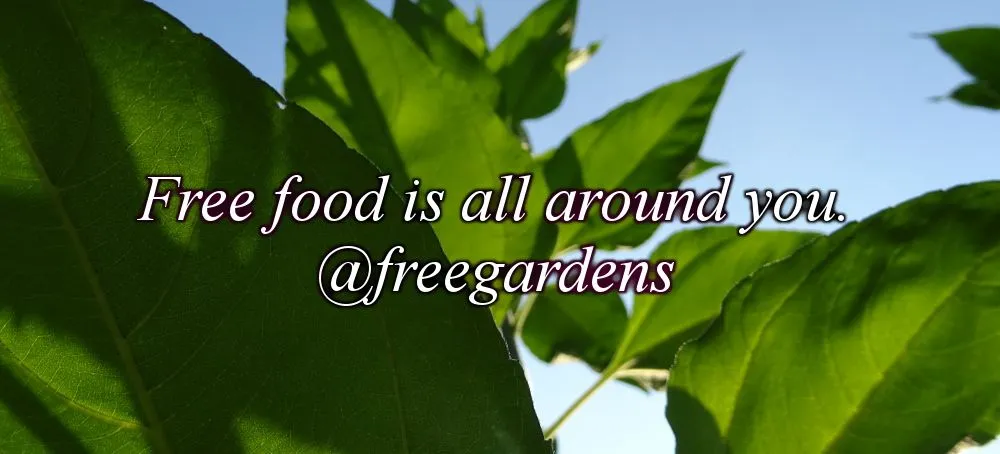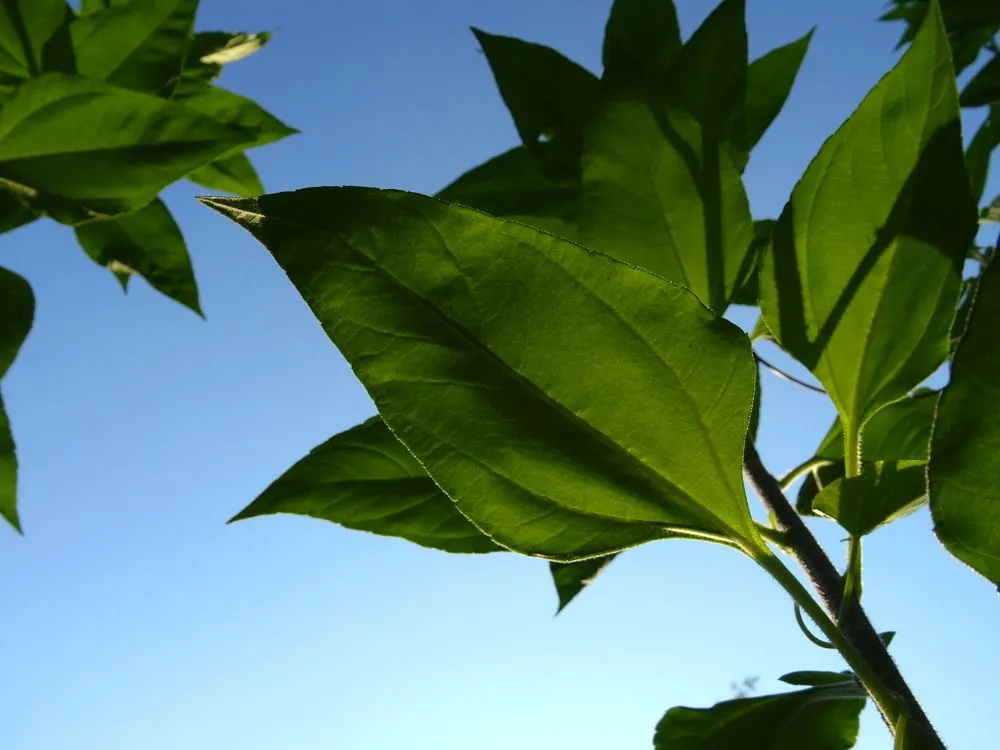
Jumping out of joy and curiosity in the inside, I was trying to decipher what is the ingredient that makes the special taste and aroma of a stew my mother made one day atleast 6 years ago. It was reminiscent of the heart (the center) of my favorite vegetable - the artichoke, yet I could find anything inside that looked like it in the plate. That was the first time I tried a Jerusalem artichoke (Helianthus tuberosus) and I was completely blown away. Mesmerized by the aroma, I spent years trying to grow them... For some reason, I couldn't get them to germinate in my garden soil. Last fall, I put some tubers that were a left-over from the kitchen in a small bed with rotten wood and a thick layer of coco coir - the most sustainable potting soil ingredient I came across for now (which I use as sowing soil too - I'll be covering that in a new post!).
I left them grow there until may, when I pluck them out and discarded the rotten tuber. On grass, I put a 30-cm-high layer of partially degraded organic carbon based material, in this case, mostly mildewy leaves and old weed roots. Then, I topped it with my garden soil mixed sprinkled gently with some ash for potassium content. I plucked the young Helianthus plants in their permanent location, filled in the gaps with a mint bush and planted some Ipomoea plants on the other side of the fence to create wonderful green foliage that covers the fence and to show their beautiful flowers.
Below, morning glories that I let climb my fence, they give me and the bees beautiful flowers,
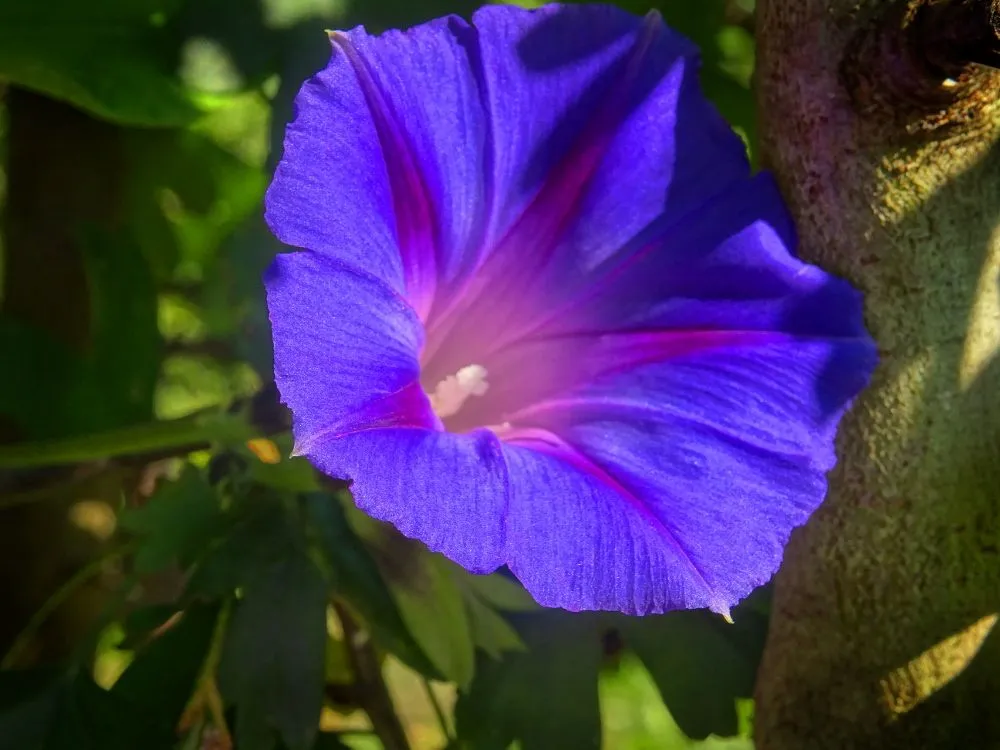
The Jerusalem artichoke grew and grew, every day a little bit closer to the sky. In May, when I planted it, it was two leaves on the ground... After a few months it grew to become taller than I am. A few days ago, upon harvesting, the tallest plant was atleast 3.5 meters high. It was exciting for me how big and fast it grows, tho' some people eat the leaves, I decided not to. I see plants, especially the tuber producing ones, as excellent solar collector that secure energy in form of carbs in the tubers... The same energy is ideal for humans aswell, so that's the priority for me, not the leaves. To get to the point, from five plants we got a bag full of jerusalem artichokes. For me, that is pretty profitable for the space and the soil they were growing on. If it was only for the taste, in my opinion, it still would be worth it - but there's something way more valuable about them!
Inulin - the fiber that makes us fart, have less problems with digestion and make us think better?!
...
We all know how probiotics are good for us. We also know that they are expensive and impossible to use every day for most of us. What I know, and most of you probably don't, is that the probiotics, by themselves, are incredibly short lasting, if at all - most die before even entering the large intestine. One way to go around is by eating a lot of indigestible fiber, which gets stuck in the intestine and is fermented (a process with which farty gases are created) by the probiotics. In other words, indigestible fiber in the large intestine acts both as a home and a source of food to the probiotics. Not only that, but it might be a safe way toward the gut if the fiber is inoculated with probiotics beforehand.
You ever heard of the term "psychobiotics"?
The scientists are really a mad bunch... They have proven the effects of probiotics on the mind and just had to call it psychobiotics! Apparently, if you don't have a healthy gut biology, you produce your own endotoxins which mess with your dopamine receptors... Meaning less feelings of gratification - which in turn means less productiveness. As it is explained here, by introducing bacterial colonies that do not produce the toxins, we teach the body how to respond to the ones that do. Again, this is only one possible mechanism, and as the scientists themselves say, it is yet to be determined in what ways does the bacteria influence the brain. One is sure - most people feel benefits, and side-effects, other than farts are not common.
That's why I'm so enthusiastic about growing Jerusalem artichokes - they are the number one on the inulin-containing plants list. Being up to 40 % this beautiful, farty fiber - it makes it an unbelievably practical vegetable (dried up tubers have even more). Being easy to grow and having low requirements and maintenance - it is a delight to grow! Not only that, but you can forage them and around here they are considered invasive - meaning that foraging Jerusalem artichokes is an ecological benefit!
Below, videos of me harvesting Jerusalem artichoke plants


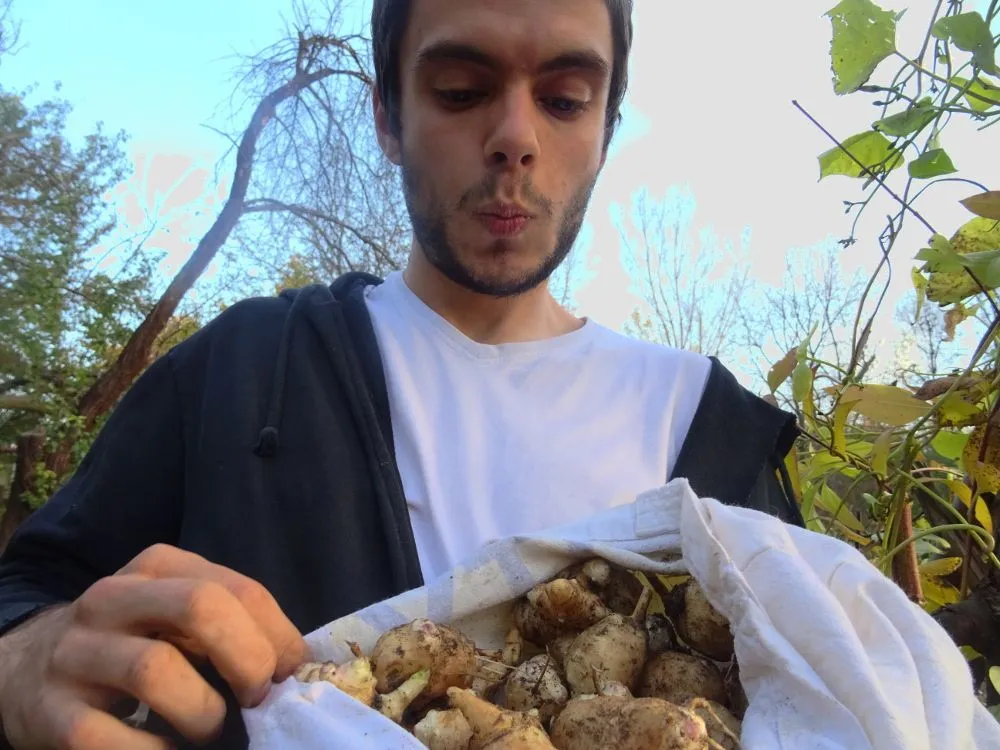
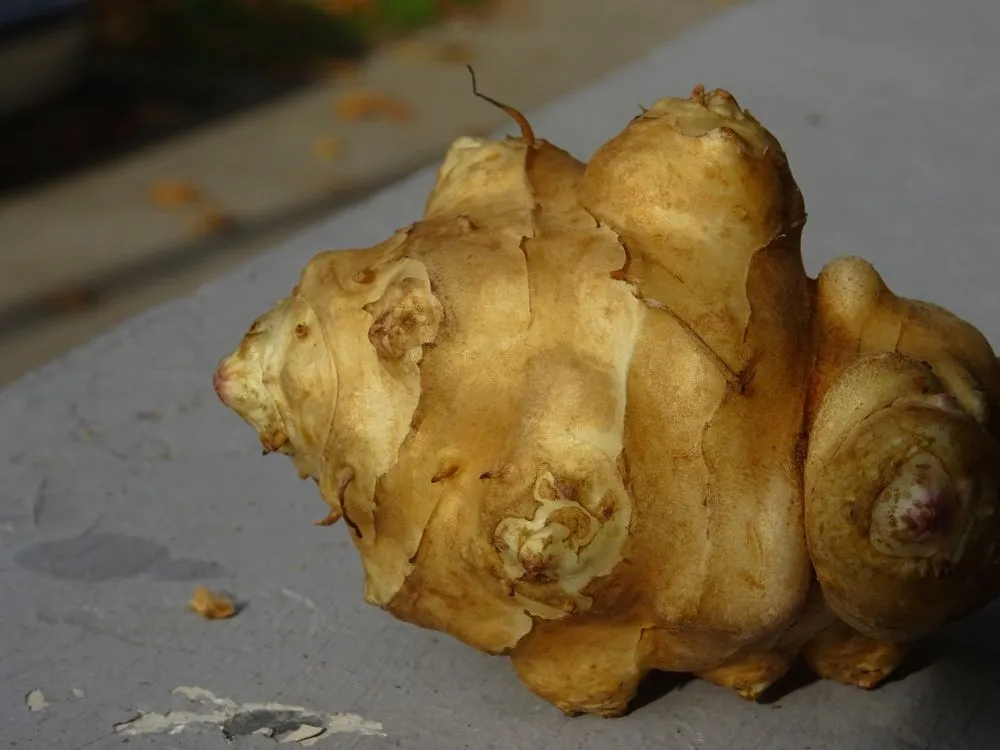
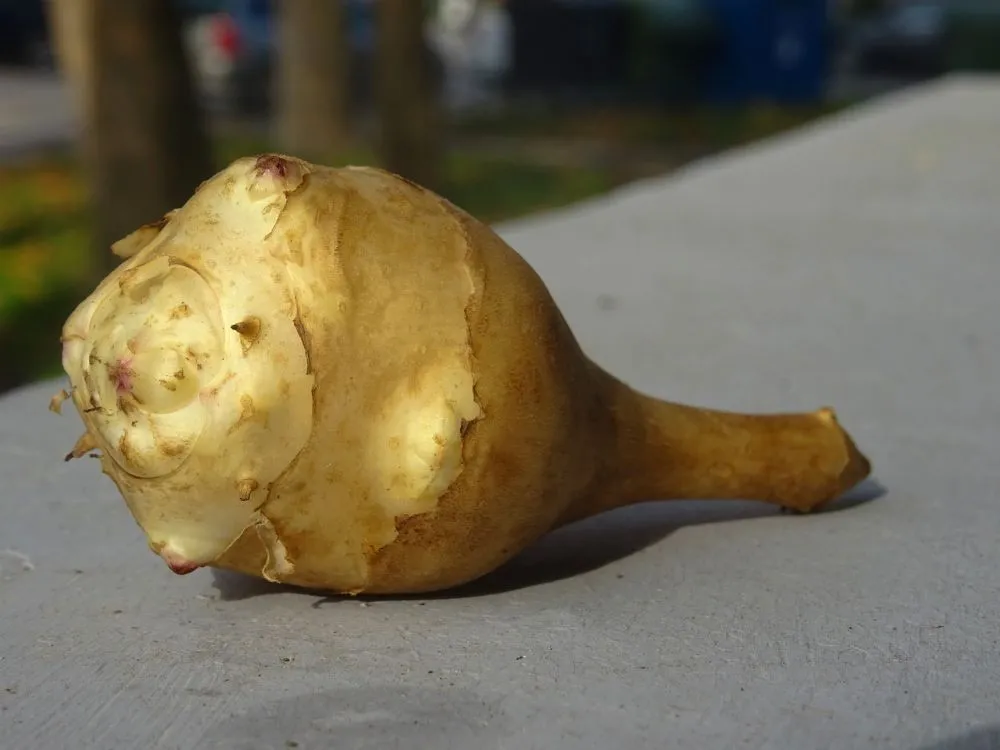
I cut up the tubers and spread them on a big piece of paper to dry. Hopefully, in a few days I'll have a stash of sunchoke chips to make sure my gut stays healthy, populated with 'good' bacteria all winter long.
Below, a close up of the sunchoke's stem. Notice the trichomes? The plant uses it to discourage insects from eating it (and being very effective at it)...
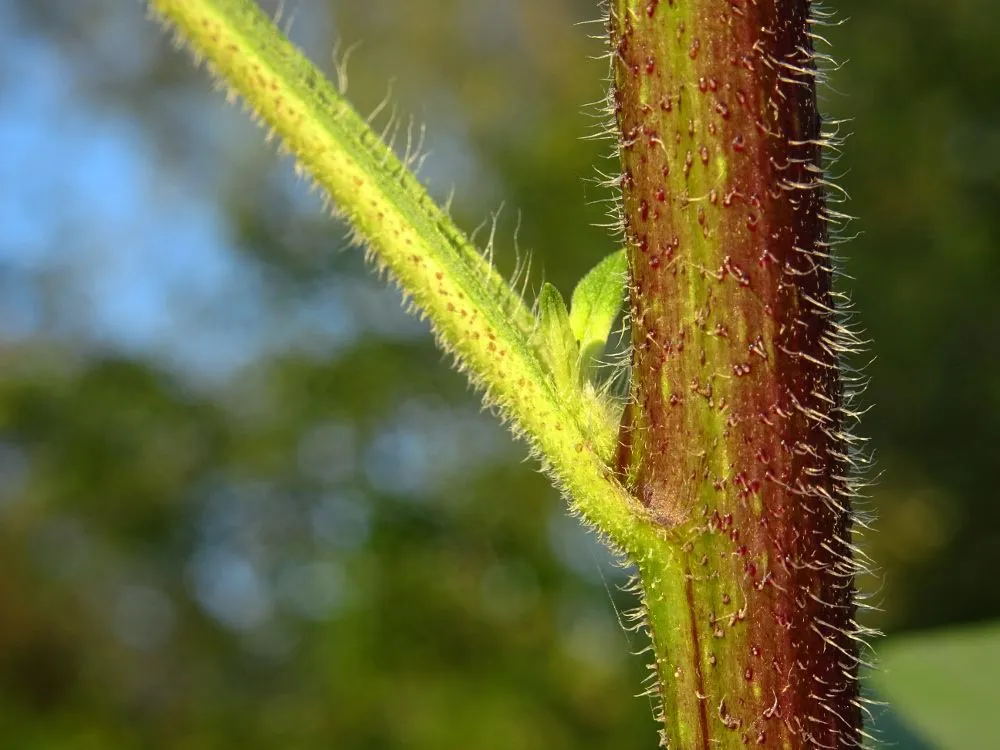
Hey, if you've been reading my blog lately, did you notice the plant in the banner is the Jerusalem artichoke?
Anyway, if you like content like this, please hit the follow button and comment below, what do you think, did you ever/do you grow sunchokes?... As always, if you write about similar topics - permaculture, gardening, plants, veganism, vegan cooking and so on - please let me know in the comments so I can follow you!
BTW - two of my real-life friends recently joined the STEEM blockchain - check out their blogs and support them if you like the content they share: meet @khalu and @planet-green!
